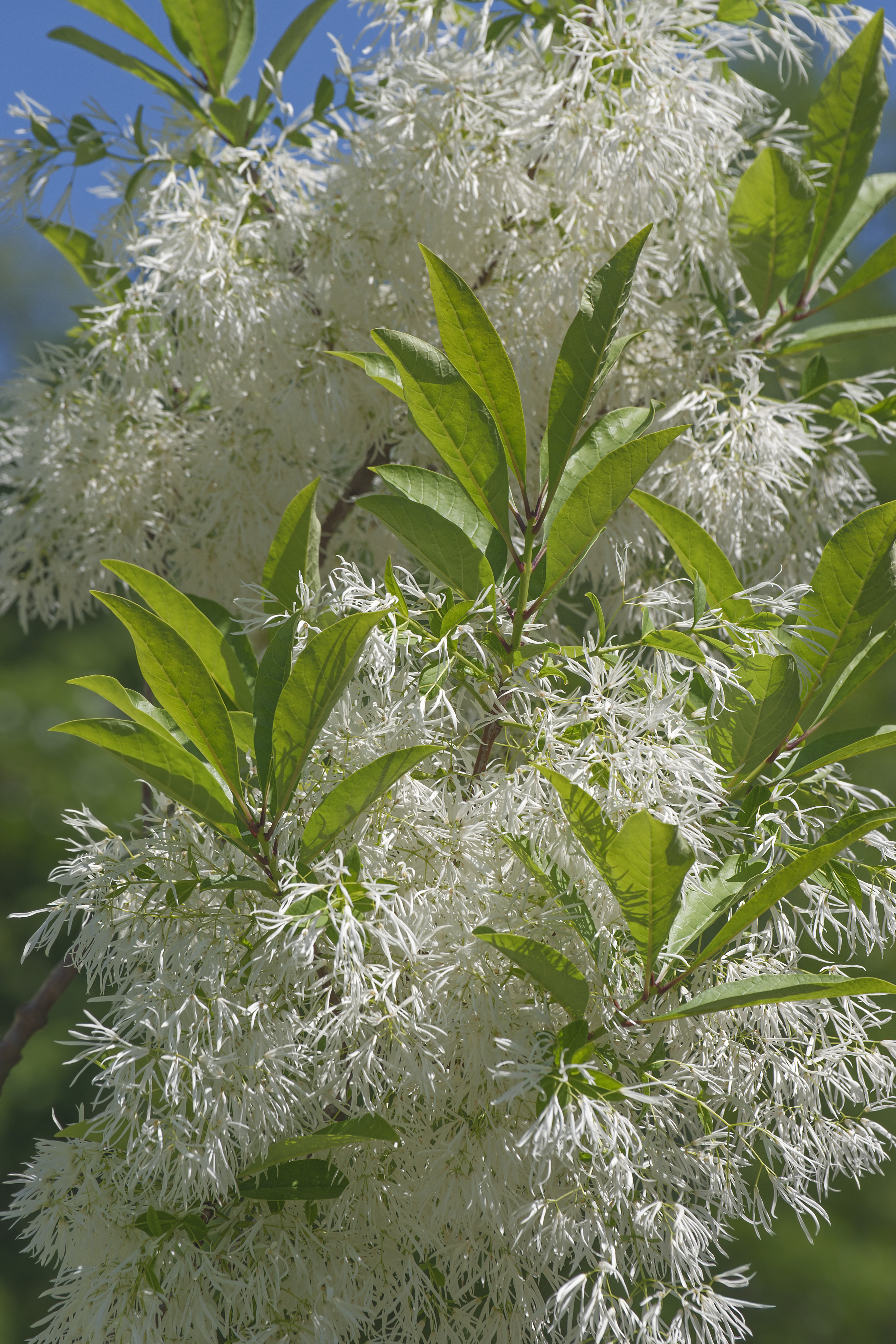White Fringetree
(Chionanthus virginicus)

Description
Chionanthus virginicus, commonly known as the white fringetree, is a deciduous shrub or small tree that is native to the eastern United States. This plant is often grown for its showy, fragrant, and delicate flowers that bloom in late spring or early summer. It is a member of the olive family, Oleaceae, and is closely related to other ornamental species such as lilacs and jasmine. Taxonomy and Botanical Description: Chionanthus virginicus was first described by the botanist Carl Linnaeus in 1753 in his work Species Plantarum. The species name, virginicus, refers to its native range in Virginia, although it can be found throughout the eastern United States, from New York to Florida and as far west as Oklahoma and Texas. This plant typically grows to a height of 12 to 20 feet and has a spread of 10 to 15 feet. It has a rounded to irregular crown and often develops multiple stems from the base. The leaves are simple, opposite, and up to 8 inches long. They are dark green in color and have a glossy surface. In autumn, the leaves turn yellow or golden, adding to the plant's ornamental value. The flowers of Chionanthus virginicus are one of its most striking features. They are small, delicate, and white in color. The flowers are borne in large, pendulous clusters that can be up to 6 inches long. The petals of each flower are narrow and fringed, giving the plant its common name. The flowers are also highly fragrant, adding to their ornamental appeal. The fruit of Chionanthus virginicus is a small, dark blue to black drupe that is oval in shape and about 1/2 inch in diameter. The fruit is not particularly showy, but it is an important food source for birds and other wildlife. Cultivation and Uses: Chionanthus virginicus is a popular ornamental plant and is grown in gardens and parks throughout its native range and beyond. It prefers moist, well-drained soils and partial shade, but it can tolerate a wide range of soil types and light conditions. This plant is generally low-maintenance and does not require regular pruning, although some gardeners may choose to shape it to their liking. In addition to its ornamental value, Chionanthus virginicus has been used in traditional medicine for a variety of purposes. The bark of the tree has been used as a laxative and a diuretic, and the root bark has been used as a treatment for malaria. However, it is important to note that the safety and efficacy of these uses have not been well studied, and the plant should not be consumed without consulting a qualified healthcare professional. Conclusion: Chionanthus virginicus is a beautiful and versatile plant that can add value to any garden or landscape. Its delicate, fragrant flowers and attractive foliage make it a popular choice for ornamental plantings, and its traditional medicinal uses add to its interest and intrigue. With proper care, this plant can provide years of enjoyment and aesthetic appeal.
Taxonomic tree:







